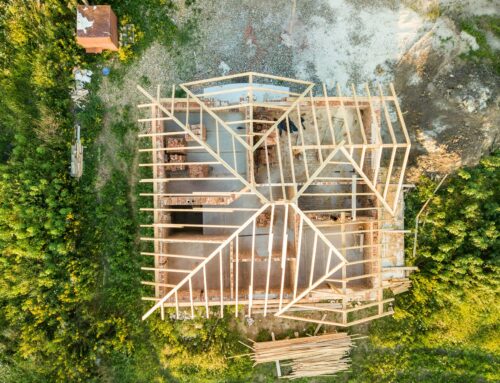A beautiful, lush landscape with towering trees might be a dream come true for many homeowners. However, beyond the aesthetic appeal, there’s a hidden danger lurking beneath the surface. Trees, particularly their roots, can pose a significant threat to your home’s foundation, leading to costly repairs and structural problems. In this article, we’ll delve into the ways in which trees can damage your home’s foundation and offer tips for preventing such issues.
The Root of the Problem: How Trees Affect Your Home’s Foundation
The primary way trees can damage your home’s foundation is through their intricate root systems. As trees grow, so do their roots. These roots can extend far beyond the tree’s canopy and into the soil surrounding your home. Here’s how they can cause problems:
- Soil Displacement: As tree roots grow and expand, they push and displace the soil around your foundation. This can lead to uneven pressure on your foundation walls, causing them to crack, shift, or even collapse over time.
- Soil Moisture Changes: Trees need water to survive, and their roots are constantly seeking out moisture in the soil. In doing so, they can extract large amounts of water from the ground, causing the soil to shrink and contract. This can result in foundation settlement and damage, especially in areas with clay-rich soils that are more susceptible to moisture changes.
- Root Intrusion: In some cases, tree roots can grow directly into your foundation, causing cracks and displacement. This is particularly concerning for homes with older, weaker foundations or those made of materials more susceptible to root intrusion, such as concrete block or brick.
Signs That Trees Are Damaging Your Home’s Foundation
If you have large trees near your home, it’s essential to keep an eye out for signs of potential foundation damage. Here are some red flags to watch for:
- Cracks in Foundation Walls: Keep an eye out for horizontal, vertical, or diagonal cracks in your foundation walls. While some small cracks are normal and expected, larger cracks or those that are growing over time may indicate a problem.
- Doors and Windows Sticking: If your doors or windows are becoming difficult to open or close, it could be a sign that your foundation is shifting due to tree root damage.
- Uneven Floors and Walls: If you notice that your floors are becoming uneven or if your walls appear to be bowing or leaning, it could be a sign of foundation damage caused by tree roots.
- Plumbing Problems: Tree roots can also cause damage to underground pipes, leading to plumbing issues such as slow drains, backups, or leaks. If you’re experiencing these problems and have large trees nearby, it’s worth considering the possibility that tree roots may be to blame.
How to Prevent or Mitigate Tree-Related Foundation Damage
While tree roots can undoubtedly cause extensive damage to your home’s foundation, there are steps you can take to minimize the risk. Here are some preventative measures to consider:
- Choose the Right Trees: Opt for trees with non-invasive root systems, such as oaks, maples, and dogwoods. These trees are less likely to cause foundation damage compared to species with aggressive root systems, such as willows, poplars, and elms.
- Plant at a Safe Distance: The distance between trees and your home’s foundation should be proportional to their mature size. As a rule of thumb, plant trees at least as far away from the foundation as their expected height at maturity. For example, a tree that will grow to be 50 feet tall should be planted at least 50 feet away from the foundation.
- Regular Tree Maintenance: Keep trees well-pruned and healthy to encourage a strong, stable root system. This can help prevent roots from searching for water and nutrients near your foundation.
- Install Root Barriers: Root barriers are physical barriers made of durable materials, such as metal or plastic, that are installed underground to redirect tree roots away from your home’s foundation. These can be an effective solution for preventing root intrusion and soil movement.
- Monitor Soil Moisture: Consistently dry soil can cause roots to grow towards your foundation in search of water. Ensure that the soil around your home is adequately watered, particularly during periods of drought.
- Inspect Your Foundation Regularly: Regularly check your foundation for signs of damage, such as cracks, shifts, or leaks. Early detection can help prevent more extensive and costly repairs down the line.
Conclusion
Trees can add significant beauty and value to your property, but they can also pose a threat to your home’s foundation if not managed correctly. By understanding the ways in which tree roots can damage your foundation and taking preventative measures, you can enjoy the benefits of a tree-filled landscape without compromising the structural integrity of your home.
If you’re looking for trustworthy tree removal in Bridgeport, Connecticut, then JNP Tree Removal, LLC is your best option! We serve the entire Fairfield and New Haven County area, providing our clients with exceptional tree removal services that are unmatched in quality and professionalism. Our team is also experienced in stump grinding and seasonal cleanups, which can help you maintain a beautiful and healthy landscape all year round. Let us offer the peace of mind that comes with working with a professional and reliable team! Contact us today to get started!




